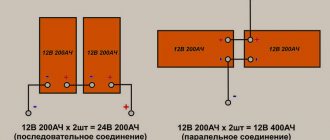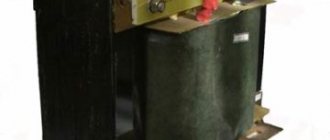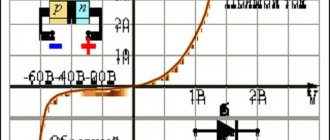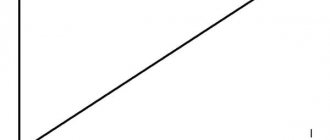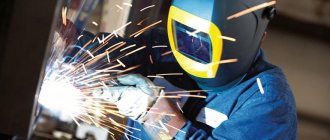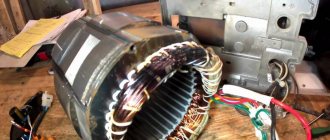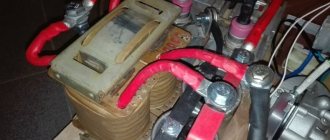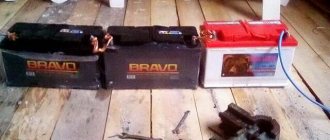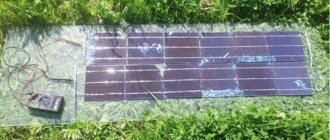Having a private house or cottage, from time to time you are faced with the need to weld something. It is expensive to pay a welder for services each time, especially since many jobs do not require special qualifications. Then there is a desire to purchase a welding machine and learn how to weld it yourself. The easiest way to learn welding is with inverter welding machines. They are controlled electronically, thanks to which they have several functions that make life much easier for a novice welder. These units allow you to get a high-quality seam even without much experience. Now it’s a small matter: you need to find out how to choose a welding inverter.
How to choose a welding inverter for your home or cottage if there are dozens of brands?
About categories and prices
All inverter manual arc welding machines working with consumable electrodes, designated MMA, can be divided into two large groups:
- Household - for occasional use and simple work. If you are not planning a large-scale construction project, you will need the device once every two to three months to repair something, weld something, etc., then the working life of the units of this group is sufficient. These are the cheapest of the inverter welders. They cost 3-5 thousand rubles or so, produced in China.
- Professional - for long hours of daily work. This is an option for those who will use an inverter in production or are planning large-scale construction: build a dacha or house, weld a metal fence and stairs. The cost of these units is about $300-400.
There is also an intermediate class - semi-professional. In terms of characteristics and price, they are approximately in the middle. This is a good choice for those who love to make things and also love a good tool. All gradations are very arbitrary, but if you tell the seller what class you want the device to be, he will understand you and offer several options.
The assortment even in an ordinary hardware store can be confusing, but in a specialized one...
There are also universal or combined welding inverters. They can weld in several modes, one of which is usually manual arc welding. These units belong to the professional class and are convenient for their versatility - some can also work as a cutter, as well as cook in an environment of inert gases, which allows you to weld thin metal and stainless steel without any problems. This equipment will be useful if you also have a car - you can do repairs yourself, as well as cook all sorts of small things around the house.
Inverter welding machine
This device is sometimes called a rectifier having a transistor inverter. And it works like this:
However, you can't just buy the first device that comes your way when you have something to weld, and so we suggest you keep an eye out for a standardized work kit for the job. Only after you have developed the technical capabilities of a product type can you try to determine where welders will find a good fit for professional users. That's what you're interested in.
Typology: Several working methods can be used, such as: electrode welding, wire welding, inert gas welding, oxyacetylene flame welding. There are also new patented methods such as plasma, photon beam or electron beam, which are usually used less frequently.
- First of all, alternating current is supplied, with a frequency of 50 Hz, to the rectifier, which is a conventional diode that passes only a half-cycle;
- Next, the rectified (direct) current is smoothed using a filter: a choke with a capacitor;
- Next, the resulting direct current is converted into alternating current using an inverter, however, the frequency of the current will now lie in the range from 20 to 50 kHz (today, there are already models that convert frequencies up to 100 kHz!). The use of such high frequencies is the main technical solution that allows the inverter to gain enormous advantages over other power sources;
In this process, a consumable electrode is heated and melted by completing an electrical circuit to bond two metal parts together. As subcategories, you have a choice between traditional and inverter units, with the difference being that the first option consumes more energy and produces lower power, while the second is a newer option that is slightly more cost-effective but more efficient.
For welding with a high degree of precision, we recommend devices that melt the metal wire rather than the electrode. If you are preparing for a welding practice that requires only basic knowledge of the work, it is good to practice with an oxyacetylene flame, also used for cutting or punching metals. Here you need a reservoir for substances that limits the mobility of your device.
After this, a “regular” power transformer lowers the high-frequency alternating voltage to 70-90V, and increases the current to the level required for welding (100-200A). This, in essence, means that the inverter welding device provides the welding current of the required strength by converting high-frequency currents, rather than converting electromagnetic force in inductive coils as in transformer-type devices.
The most durable and versatile method is the gas shielding method, and in this case the electrode does not melt, since it is not for the added material, but for Tungsten. In addition to common metals, this method has the ability to weld materials that exhibit an affinity for the gas, with argon most often used to protect against exposure to air.
Welding material: can be steel, stainless steel, cast iron, aluminum, copper, titanium, etc. When you work longer on steel or stainless steel, almost any type of device will get the job done. They will only be used when the aluminum layer is thick. As we already mentioned, titanium, copper and other less commonly used metals require an electrodeless model. The latest generation of plasma products are believed to be suitable for welding any metal, but the acquisition cost will be considered relatively high.
The use of preliminary current conversion makes it possible to use transformers with very small dimensions. For example, to obtain a welding current of 160A, an inverter device uses a transformer that weighs 250g, while a conventional welding machine will require the use of a copper transformer weighing 18 kg to obtain these parameters;
Supported electrode material: can be added or permanently. The most common versions of additional electrodes are rutile, basic or cellulose. For large diameter welding that can be done in any direction, even vertically, you choose devices that use rutile electrodes. Their advantage is that they work well with direct and alternating current, and the resulting electric arc has high stability.
However, the quality of the connections will be lower and more vulnerable in terms of resistance to mechanical shock. For normal welding, the most basic electrodes are used, even if a lot of additive material is consumed, the joint will have increased strength. Less advantageous is that they will only be used by devices operating in direct current parameters, and the stability of the electric arc will be unstable.
After passing through the high-pass filter, the current is directed to the arc;
All current transformations are controlled using the control unit. Modern welding machines use an IGBT module for these purposes, which is the most expensive part of the device.
If you are planning to weld pipes, make sure that the model you want to buy can use cellulose electrodes, which are the most indicative of the situation. Efficiency level: Described based on the ratio of energy consumption, welding quality and the purchase price of the device. If you are more interested in the quality of your device and performance figures, choose one with an inverter, even if you make a big investment. Welding inverters not only offer the advantage of continuous power and implicitly enhanced electrical control capabilities, but also guarantee the ability to work with any type of electrode, generate high melting power and have very low power consumption.
If what an inverter-type welding machine is is approximately clear, then the pros and cons of these devices in comparison with other welding machines remain a mystery. Let's try to shed light on these issues.
Determining the characteristics
Choosing a price category is good, but you also need to select technical specifications. First, let's decide on the power supply. If you are choosing a unit for private use at home or in the country, most likely you will be more satisfied with power from a 220 V network. There are also welding inverters from 380 V, but it is unlikely that anyone has such sources at home. And if there is one, choose three-phase inverters. There are much fewer of them, but they also exist.
Welding current
How to choose a welding inverter based on technical characteristics? In this matter, they proceed from the products and their thickness that you plan to work with. First of all, select the maximum welding current that the unit can produce. It is designated Imax, the unit of measurement is Amperes.
There is a fairly clear relationship between the thickness of the metal you want to work with and the current that will be needed for welding. This dependence is presented in the table.
| Diameter of electrodes, mm | Metal thickness, mm | Welding current, Amps |
| 1.5 mm | 1.2 - 2.0 mm | 30 - 75 A |
| 2.0 mm | 1.5 - 3.0 mm | 40 - 100 A |
| 2.5 mm | 1.5 - 5.0 mm | 50 - 120 A |
| 3.0 mm | 2.0 - 12.0 mm | 100 - 150 A |
| 4.0 mm | 4.0 - 20, mm | 120 - 200 A |
| 5.0 mm | 10 - 40 mm | 170 - 270 A |
If you are going to weld ferrous metal (angles, channels, etc.) with a thickness of no more than 1 cm, it is enough for you that the inverter can produce 160-180 Amperes. If, at least from time to time, you have to work with greater thickness, you need a current of up to 200 Amps. Sheets of iron thicker than 2 cm are not used anywhere in everyday life, so 220-250 Amps for a home or cottage is clearly too much. It’s hardly worth overpaying for unnecessary power; then it’s better to spend the money on purchasing a unit of a higher class (or on a good chameleon mask, without which it will be difficult for a novice welder).
In addition to the welding inverter, you will also need protective gloves and a welder’s mask. For beginners in welding, a chameleon mask is recommended
The minimum current Imin is needed when welding thin metals with an inverter. If you need to weld steel or stainless steel up to 2 mm thick, you will need to heat the parts being welded as little as possible. This is where the minimum current is needed. As a rule, the lower limit of adjustment is 10 A, but there are units on which you cannot set it to less than 30-40 A. They are good for those cases if you have special equipment for “delicate” operations (for example, a semi-automatic welding machine).
The organization of current regulation is also important. It can be stepped or smooth. Continuous adjustment is better - it allows you to more accurately select the operating mode for each metal and electrode.
Open circuit voltage
This characteristic is measured with the equipment turned on and no load. Denoted as Uxx, the unit of measurement is Volts (V). It determines how easily the welding arc will be ignited and how stable the arc will be. The range of values is 40-90 V. The higher the declared open circuit voltage, the easier the welding will be.
Technical characteristics of the welding inverter Fubag in 160. Open circuit voltage can be described as follows
Supply voltage
As already mentioned, most inverters operate from a 220 V network. But on Russian networks, a more or less stable voltage is maintained only in large cities. In rural areas, a voltage of 190 V is already good. But the good thing about inverter welding machines is that they are undemanding in terms of supply voltage. They cook quietly at 180-190 V, and some models can “pull” an electrode with a 3 mm diameter even at 150 V.
If the voltage in your village is low, pay attention to this indicator. It is usually written simply as “voltage” and the minimum and maximum values are indicated through a dash: for example, 150-245 V. Sometimes you can see the following entry: 220 V +10%, -30%. This means that the device will cook normally if the supply voltage is in the range from 154 V to 244 V (220 V - 30% = 154 V, and 220 V + 10% = 244 V).
Maximum current operating mode
If you have to work at the maximum possible current, then the unit will have to be given time to cool down. That is, cook for a while, rest for a while. These intervals are counted for 10 minutes, designated in the technical data as “DC at maximum current”, measured as a percentage - %.
For example, if the characteristic specifies the PV at a maximum current of 40%, this means that out of 10 minutes you can cook 4, and 6 you will wait until the device cools down. At least 50-60% are considered normal characteristics, 70% and above are considered good.
Technical characteristics of inverter welding TORUS-165 MASTER (Torus 165 Master)
Please note that this requirement only applies to the maximum current, or close to it. At medium or low currents there is no need for forced stops. You will still have to change the electrodes or position or move the part from time to time. So there will be pauses.
That's all the technical parameters that are needed. Now you know how to choose a welding inverter based on its characteristics. But that's not all. There are also additional functions. For beginners they can be very useful. And some operational issues may also influence the choice.
Types of welding current
Welding transformers output alternating current (AC) at the mains frequency, that is, 50 hertz. Let's be honest: welding metals in this way is a rather problematic process. Firstly, highly qualified welders are required, and secondly, the weld is of insufficient quality.
Changing the arc voltage 100 times per second leads to corresponding changes in the rate of molten metal transfer and the temperature of the weld pool. The result of these processes will be metal spattering and uneven weld penetration. In addition, this type of welding is characterized by the seam moving to the side.
The best results are obtained when welding with direct (DC) current of both direct and reverse polarity (to connect reverse polarity, the “+” and “-” sources are swapped).
Direct current can be obtained from a welding transformer with an additional power rectifier. But, as you understand, this will cause unnecessary expenses. Inverters offer us the best opportunities. Here you can get both AC and DC voltage at the output.
The alternating voltage of welding inverters has a high frequency, due to which the arc parameters become more stable and their characteristics approach those of a direct current arc. Some metals and alloys can only be welded with alternating current, for example, aluminum, which has a very specific oxide film on the surface. This film can only be destroyed by alternating current. Thus, today we have three types of welding current in wide demand:
- high frequency variable;
- constant straight polarity;
- constant reverse polarity.
Additional functions of inverter welding machines
The presence or absence of service functions is not critical, but it makes life a lot easier, especially for a beginner. Their set is usually standard:
- “Hot start” HOT START - affects the ignition of the arc. When igniting, an additional impulse is given, which makes it easy to start welding.
- “Arc Force” - ARC FORCE - when the electrode suddenly approaches the metal, the welding current automatically increases. This prevents the electrode from sticking.
- “Anti-stick” - ANTI STICK - turns off the power when the electrode gets stuck, turns it on after it comes off. A convenient function, especially relevant for novice welders.
There are some other useful features. For example, indication and automatic shutdown when overheating. This is a useful addition - it is not always possible to keep track of the time or the overheating indicator. Automatic shutdown saves you from burnout and expensive repairs.
A welding machine for manual electric arc welding allows you to weld almost all metals, except non-ferrous ones
Pay attention to the package: in addition to the welding machine, there is usually a power cable (sometimes it is removable, sometimes it is stationary), two welding cables - one with a clamp for attaching to the part, the second with an electrode holder. It is better if the cables are light, flexible and long. But such luxury is not always available. More often, working cables are about 2 meters long, which is not always convenient. When looking at the cables, pay attention to how they are terminated, soldered (preferably) or clamped/rolled.
Pay attention to the warranty period, as well as how close the nearest service center is to your home/dacha. The lack of a service network is an alarming sign. This means that even if there is a warranty breakdown, you will have to repair it yourself, for money. You won’t send your device for repairs across half of our rather large country...
Useful additional features
The most inexpensive inverters can only change the current strength and show an indication of the network and overheating. Most often, the automation turns off the power when the temperature rises. But to make work more comfortable or easier, there are several additional functions.
Anti Stick function
To get an even seam, it is necessary to maintain a clear distance between the end of the electrode and the parts to be welded within 3-5 mm (depending on the current strength). Beginners have difficulty doing this (the hand is not yet used to it), so the electrode often sticks to the surface. The function instantly turns off the voltage and resumes it as soon as contact with the product is broken.
Otherwise, the user must use physical force to tear off the end of the filler material, which results in crumbling of the coating.
Hot Start function
Practical for welding rusty metals or critical joints. The function operates by supplying increased voltage (V) at the start of welding, which ensures easy ignition and eliminates the need to repeatedly knock the end of the electrode on the surface. If this is the front side of the part, then the arc will leave fewer marks, which will then have to be processed mechanically.
Arc Force function
Optimal for beginners whose electrode often sticks. A device with this function “feels” the distance between the contacts and when the arc is about to go out, it briefly adds current (A) to prevent this. This action is also useful when welding thin metals (1.0-1.2 mm), since small values are initially set there (20-40 A), which provokes sticking.
It is better to choose an inverter with a digital display, since this way you can always see the current voltage and current. The drawn scale is usually small and already difficult to distinguish from 3-4 meters.
Inverter with electronic display.
If the machine is equipped with a connector for TIG welding, then the arc decay function is useful, providing a smooth decrease in amperes when the welder releases the button. This will prevent the formation of fistulas at the end of the seam and allow the weld pool to crystallize systematically.
When an inverter machine with argon is used for welding large stainless steel containers or repairing motor housings and gearboxes, the function of remotely adjusting the current strength is practical. It is made in the form of a second button on the burner and allows you to adjust the amperes without approaching the inverter each time.
How to choose a welding inverter manufacturer
Now you know how to choose a welding inverter based on technical characteristics. The most difficult task remains: choosing the brand of the device, or rather, the manufacturer.
Chinese welding machines or?
In the category of household welding inverters, almost all units come from China. There are brands that are completely unknown to anyone, and there are brands that have been working for years and have earned a certain authority. Well-known Chinese brands are, as a rule, equipment produced by reputable factories equipped with modern equipment.
The “owners” of the brand are Europeans, Americans and even Russians, and production facilities are located in China. This scheme has long been worked out and is well known. That’s why recently even two lines have appeared in the descriptions of devices: “homeland of the brand” and “country of manufacture.” To call these inverters “Chinese” is not entirely correct, but they were manufactured there. In general, it's up to you.
Chinese inverter welding machines known on the market do not have the lowest prices. But they have been tested, and most of them have a network of service workshops or a repair contract with one of the similar services. Here are a few brands that have mostly good reviews:
- Welding inverters Resanta. The homeland of the brand is Latvia, the manufacturer is China. There are three lines: SAI - models with a maximum welding current from 140 A to 250 A, supply voltage from 170 V to 250 V. Price from 6.5 thousand rubles for SAI 140, up to 14 thousand rubles. for the 250 amp model.
- SAI PN - models operating at reduced voltage - from 150 V. Price from 11 thousand rubles. for a 160-amp unit, up to 18-19 thousand rubles for a power of 250 amperes.
- SAI K are compact models that have less weight and dimensions, and have the same characteristics as SAI. Priced from 7.3 thousand rubles for a 160 A device, up to 12 thousand rubles for a 250 A device.
Resanta welding inverters of the SAI, PN (reduced voltage) and K (compact) lines (To increase the size of the picture, right-click on it)
- Household models ARS 165, ARS 205;
- Welding inverters Fubag (Fubag), the homeland of the brand is Germany, the manufacturer is China or France. The IN series is assembled in France, and the IR series in China. Permissible deviation in supply voltage 220 V +/- 15% (190 - 250 V). The Fubag IN series of welders can operate in MMA and TIG modes (welding in an argon environment; the TIG mode requires a special set of equipment - purchased additionally). Price from 11.8 thousand rubles for a device with a capacity of 16 Amperes, up to 18 thousand rubles. for a power of 220 amperes.
- The IR series of inverter welding machines is MMA welding only and has anti-stick and hot start functions. Price from 7 thousand rubles. for 160 ampere and up to 9.5 thousand rubles for 220 ampere.
- Another representative of Russian inverters produced in China is the Kedr inverter welding machines. “Cedar MMA” series - work only with consumable electrodes. There is a “hot start” and “anti-stick” function. Prices from 7.5 thousand rubles. for the lowest power (170 Amperes) and up to 9.5 thousand rubles. for a 220 Ampere unit.
- The “Cedar ARC” series is a professional series of units, they also have an arc stabilization function, the price starts from 10.5 thousand rubles for a unit with a capacity of 160 amperes, and up to 28 thousand rubles for a 400 ampere unit.
- Interskol inverter welding machines. This is another brand originally from Russia that produces equipment in China. Feature of the package: the power plug is not included in the package. It is stated that the device operates with a power supply from 140 to 240 V. There are two lines: “Interskol ISA, for MMA (manual electric arc welding with a consumable electrode). Prices from 6.5 thousand rubles. for a device delivering 160 amperes, up to 10 thousand rubles. for a power of 250 amperes.
- Intersokl ISP series - in addition to MMA welding, it can work in MIG/MAG mode (in an environment of inert or shielding gases). The price for ISP 160 amperes is 19 thousand rubles, for ISP 200 amperes - 21 thousand rubles.
- FoxWeld welding inverters are made in China. Good characteristics, wide choice. There are several lines of budget welders for dachas that operate at reduced voltage. FoxWeld Summer resident - price from 7.2 thousand rubles for a 160 A unit. A digital display with large numbers makes it easier to perceive information. Supply voltage is 180-240 V, although not the best performance at maximum current: PV 40%. Open circuit voltage 56 V.
- FoxWeld Corundum - With generally similar characteristics, it has the best current-voltage characteristic: open circuit voltage 78 V.
- FoxWeld Master can work with a argon arc welding kit. PV at maximum current is even lower: 35%. There are functions of “hot start” and “anti-sticking”, arc forced.
Russian welding inverters
There are only a few welding machines produced in Russia. Several years ago, Torus inverters appeared that meet the declared characteristics and produce a stable arc. What's nice is the long warranty - 3 years. Such a period occurs very rarely, so this already gives us hope that everything should work well. There are two lines:
- Household appliances "Torus" - 165, 175, 200, 210 (this is the power in amperes). Price from 13 thousand rubles. for a 165 amp model up to 15 thousand rubles. for more powerful ones - 200-210 amperes, duty cycle at maximum current 60%.
- Professional line Torus 235 Prima, 250 Extra, Torus 255 Pro (from 17.3 thousand rubles to 20.5 thousand rubles), PV at maximum current 80%.
The declared supply voltage is 165-242 V. Please note that welding cables are not included in the basic package. They need to be purchased separately.
Watch the tests of the Torus 250 inverter welding machine in this video.
Inforce inverter welders are also produced in Russia. They belong to the professional category, there are only two models for 200 and 250 amperes. They can operate in both MMA and TIG modes (torch and gas cylinders are purchased separately). The current adjustment is smooth - from 50 to 200/250 amperes, the work/rest ratio at maximum current is 60%. The price of Inforce inverters is 16-21 thousand rubles.
In Nizhny Novgorod, the ElectroIntel enterprise produces Neon inverter welding machines. This technique is designed to work in harsh conditions: it cooks normally at temperatures from -40°C to +40°C. The devices are universal - I also work in both manual arc welding and TIG modes. For devices of this type the price is very low. For example, a welding inverter NEON (Neon) VD 160 costs 9.7 thousand rubles. The second modification, which may be suitable for domestic use (for construction, for example) This NEON VD 180 is sold at a price of 12.5 thousand rubles. The devices have all service functions and a multi-board structure (more repairable than single-board analogues). The work/rest ratio of PV at maximum current is 80% (measured at a temperature of +40°C).
What parameters should you pay attention to when choosing a welding inverter?
Before choosing an inverter welding machine, you need to take into account the location of operation (permanent or changing), network parameters, upcoming work (metal thickness, number of connections, type of steel, spatial position). All this will help to more accurately understand what characteristics the device must have in order to cope with the assigned tasks.
Here are the key technical data and how it relates to workmanship and performance capabilities.
Operating voltage
Inverters come with an operating voltage of 220 or 380 V. There are models of a combined type that can switch. For home and garden use, it is better to choose 220 V devices, as this simplifies the connection through a household outlet. They can easily be brought to the work site by attaching a carrier.
380 V inverters are professional equipment for connection in enterprises. This allows you to obtain increased power and melt thick metal from 20 mm. If you often come across such products at work and there is a three-phase input in the garage, then it is advisable to choose just such a device.
Combined type models are practical for moving activities, when you can cook from 380 V in the workshop, and connect to a household outlet when traveling.
In addition to the standard operating voltage parameters, you need to select an inverter based on the input current range. When 220-230 V is stably present in the house, then a model with exactly these characteristics is suitable. But if the voltage often drops at the dacha, then the equipment will not be able to produce the required current strength, and sometimes even carry out welding. Here the choice is made in favor of inverters capable of cooking with an input voltage of 130-190 V.
Welding current adjustment range
The range of adjustment of the welding current affects the thickness of the metal that the machine can handle. The upper and lower bounds are important here. For example, to weld a barbecue made of 4 mm thick steel, a current of 120-160 A is sufficient. You can weld a canopy to a gate with a current of 100-140 A. This is also enough for making a greenhouse or laying a water pipeline. An inverter with a maximum current of 160-190 A is suitable here.
But when the priority is welding thick parts (channels, rails), or when the inverter is used for cutting in hard-to-reach places, then choose a current strength of 250-400 A. There are industrial devices with an indicator of up to 500 A.
The lower current limit is important when welding thin metals. For example, to make a tank from steel 1.5 mm thick, you need to lower the current to 45-70 A. When you need to patch up the car body, you use an even lower current of 15-30 A. For this, choose an inverter capable of lowering the amperes to these values.
Another important thing is the form of current regulation, which can be smooth or stepped. The first changes readings in 1A steps, and the second switches at intervals of 10-20 A, depending on the model. When you have to weld the same metals according to the type of steel and thickness, then stepwise adjustment with large increments is enough, because the settings will rarely be accessed. But if the thickness and types of materials often change, then better quality seams will be obtained using a finely adjustable machine that allows you to adapt to a new task.
Duration of switching on (DS)
For each inverter, its on-time duration is indicated, indicated as a percentage, which implies the operating time at maximum current. This figure varies from 30% to 100%. In practice, this means that a model with a maximum current of 200 A and a duty cycle of 30% will be able to work for 3 minutes out of 10, and then turn off for cooling.
If you need an inverter for small household tasks, then a duty cycle of 30-50% is sufficient. In this case, such work will not be performed at the maximum current, which actually increases the welding duration to 5-6 minutes. Since there is no rush here, there is no point in overpaying for more productive models.
But when the priority is high speed of work performed (for example, when making a tank or doors for sale, where after tack welding you can continuously carry out full welding), then it is better to choose an inverter with an on-time of 60-80%. Moreover, the higher the maximum current value, the longer it will be possible to work at lower values. For frequent metal cutting, a PV value of 100% is desirable.
Open circuit voltage
Thanks to the inverter transformer, the voltage in it drops to 12V during welding, making it safe for the welder who comes into contact with metal parts. When the arc is not ignited, the device maintains an open circuit voltage varying from 30 to 90 V. When the electrode is brought to the product and the arc is excited, it automatically decreases.
This indicator affects the ease of ignition of the electrode. The higher the open-circuit voltage, the faster the passage of electricity and initiation of the arc. This is especially practical when welding rusty metals, which eliminates the need to protect the joint until it shines before applying the seam.
If an inverter is rarely needed and it is not difficult to clean the welding area, then an open circuit voltage of 30-50 V is sufficient. For an experienced welder, this will be the best option. It will be much more difficult for a beginner to ignite the electrode, and if the metal is also rusty or contains traces of paint, then it is better to choose a device with an idle speed of 70 V or more.
Power consumption
This indicator is measured in kW and can be from 4 to 27 units. It implies what load the device will put on the network when operating at maximum current. For your home, it is better to choose low-power models in the range of 4-6 kW, which will not burn out the wiring. If a powerful line is laid in the garage and there is a 16-25 A machine at the entrance, then a more powerful 7-9 kW model is suitable, allowing you to weld thicker metal or carry out cutting. For 10 kW equipment, a connection to a panel board and three-phase network will be required, which is not applicable everywhere.
The power consumption parameter is also relevant in the case of mobile use of the inverter. For this, a gas generator is used, but its output current must cover the needs of the welding machine. Often the capabilities of generators reach 5 kW, so you need to choose an inverter within these power limits.
Protection from dust and moisture
The protection of the case from dust and moisture penetration is indicated by the international IP system with numbers from 21 to 23. The first number means that large objects with a diameter of 12.5 mm or more will not get into the case. This is a standard that protects internal elements from being struck by tools or protruding metal structures. In view of this, you should not work near the inverter with a grinder or drill, because small particles can easily penetrate inside the housing and short-circuit the contacts.
The second digit means:
- 1 - the inverter is protected from vertical raindrops.
- 2 - the housing will not allow falling drops to pass through at an angle of up to 15 degrees.
- 3 - falling splashes at an angle of up to 60 degrees will not cause harm.
Since welding work cannot be carried out in the rain, the degree of protection has a greater influence on whether it will be possible to save the device if there is an unexpected downpour and welding was carried out in the open air. If you plan to work in a garage, IP21 is enough, but for frequent use in the yard or even in the field with a generator, IP23 is useful.
Ventilation system
To prevent the transformer and diode bridges from overheating, a ventilation system is built into the inverter housing. Its simplest design consists of a fan and perforations on the case for air in and out. Due to this design, the internal components are often covered with a layer of dust, which slows down the heat transfer process and requires disassembling the housing and cleaning. But for household needs using 1-3 hours a day, this is quite enough.
The second type of ventilation system includes a cooler and radiators, with the key components of the inverter built inside the radiators. This helps to absorb heat more efficiently and remove it outside, but such models are more expensive. The choice of an inverter with a radiator is justified in case of frequent use of the device at maximum current (welding of thick metals, cutting).
Inverter cooling system with powerful fan and radiators.
Does operating temperature range matter?
Thermal indicators of PV are calculated based on a temperature of +25 degrees. Therefore, in cooler climates (+10…+15), the devices will be able to work longer. Some reputable manufacturers include a working value of +40 degrees in their products. Problems rarely arise with positive temperatures if you choose the right PV and current strength.
But when working in cold weather, electronics may malfunction. For a home or cottage, this will not be a problem if welding is carried out in a barn or garage. Any inverter cooks perfectly at an outside temperature of +5 degrees. But when you have to apply seams directly in the cold (installing a fence, gates, welding trusses to mortgages), then you need to check with the manufacturer on the official website (via the contact form) for the acceptable parameters, because this is not indicated in the characteristics.
Weight and dimensions are important
Despite their much compact dimensions compared to transformers, inverters still have differences in size and weight, which is related to their power and functionality. Small devices are produced with dimensions of 150x200x300 mm, which is well suited for mobile use. They can be easily delivered to the work site in a special case.
Most models have a shoulder strap, which is convenient for working at height. In this case, their weight varies from 3 to 4.5 kg. But the maximum current rarely exceeds 200 A, so they will not be able to connect steel that is too thick.
When using an inverter to solve more serious welding problems (assembling a garage frame, cutting), they use powerful models. Their dimensions can reach 500x200x450 mm, and weight up to 25 kg. To operate such equipment, you will need to allocate a permanent location and long cables to reach the corners of a large structure. Otherwise, you will still have to purchase a cart for transportation if you don’t want to carry it in your hands.
Professional inverter welding machine.
Classification of welding inverters
So, let’s now move directly to the topic - how to choose a welding machine (inverter). There are three types of device classification:
- Household, which interests us. Its current strength varies in the range of 100-200 amperes. The best choice for beginner welders.
- Professional. Here the current strength varies from 200 to 300 amperes. Such models are mainly used by housing and communal services workers and employees of small firms and workshops.
- Industrial. Current range is 250-500 amperes. Such welding units are used where a high-quality weld is required. Therefore, they are used in construction, in work related to the laying and welding of pipelines operating under medium and high pressure.
Having understood the types of welding machines for manual welding, we move on to identifying their advantages over others.
Small size household model Source fgpip.ru
Rating of household welding inverters
All ratings are usually based on reviews from specialists and ordinary consumers. And ours is based on them.
WESTER IWT200
This welding inverter is located in the middle price range, so not all home welders choose it. But in vain. Here are its technical characteristics:
- maximum current – 200 A;
- operates at a voltage of 170 V;
- unit power – 4.8 kW;
- diameters of the electrodes used: 1.6-5 mm;
- weight – 5.87 kg;
- has all the functionality.
A very important point is that the control board is a separate element, which makes it possible to simplify the repair of the device. The only drawback is that the device is not designed to perform complex welding work.
Inverter WESTER IWT200 Source www5.originalshopping.ru
Aurora MINIONE 1800
This is a cheaper model than the previous one, hence its serious popularity among summer residents. But this is a welding inverter with a standard set of functions and technical characteristics:
- rated voltage consumption – 220 V ±10%;
- the maximum welding current is 180A, it can be reduced to 20 A, which is very convenient;
- The unit weighs 5 kg.
Svarog PRO ARC 160
The price component is average. This model was made specifically so that it could be used to carry out not only electric welding, but also argon arc welding. True, for this you need to additionally buy a valve burner. It is not included with the inverter.
Regarding technical characteristics:
- mains voltage – 220 ±15%;
- welding current strength from 10 to 160 A;
- the diameter of the electrodes used is from 1.5 to 3.2 mm;
- weight 4.7 kg;
- all functionality is present.
A large number of consumers noted that the inverter often turns off if the voltage in the network drops, and the welding process itself was carried out using a cable more than 5 m long. That is, two factors play a big role here.
Welding device Svarog PRO ARC 160 Source qwerty96.ru

